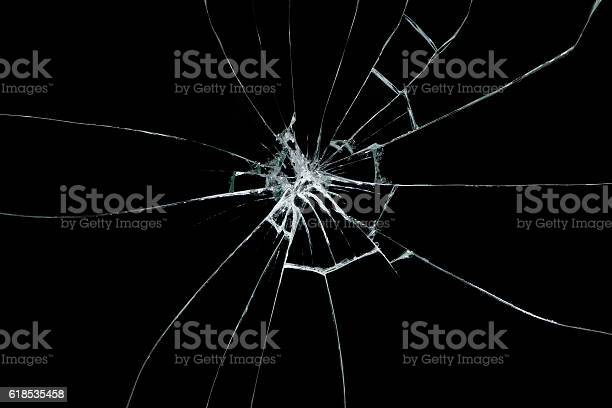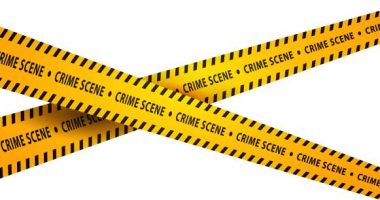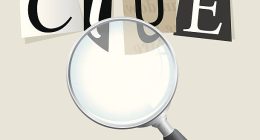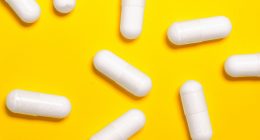Glass is a hard, brittle, amorphous substance obtained by fusing a mixture of silica and two or more alkaline bases, such as soda, lime or potash. It is also contains certain amount of various other elements and metals as impurities or may have been added for obtaining color, degree of hardness, heat resistance glass etc.
Glass as a physical clue, frequently encountered in various crimes such as road accidents, murder, hit and run, sexual assaults, arson and vandalism. Thus glass is one of the important evidence in many criminal investigations.
METHODS OF EXAMINATION OF GLASS
The forensic examination of glass could also be undertaken in two steps. One is that the physical comparison of suspected and control glass fragments and their source and secondly, the examination of glass fractures on fragments and their reconstruction for determining the direction and sequence of impact of projectile.
PHYSICAL COMPARISON FOR EXAMINATION OF GLASS
- APPEARANCE- transparent/ milky/ ground/ colored.
- Type of glass- ordinary/ borosilicate/ laminated/ pyrex/ automobile glass etc.
PHYSICAL MEASUREMENTS OF EXAMINATION OF GLASS
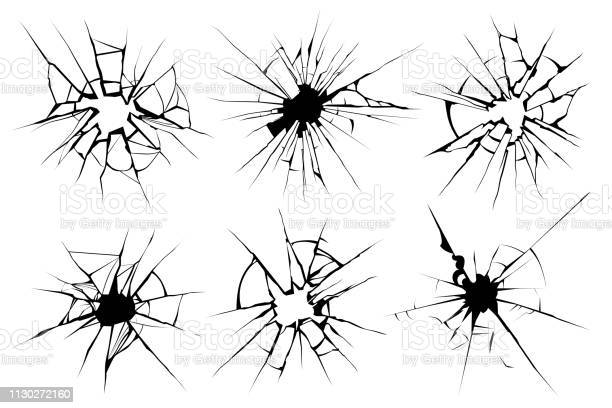
The physical examination of glass includes two mainly parameters namely, the thickness and curvature of glass pieces under examination of glass evidence. The thickness of glass sheet varies significantly from one place to another place and do not uniform throughout.
- EDGE THICKNESS: a micrometer is employ to measure accurately the edge thickness of the glass fragments. Reading should be taken all around the broken edged to find out at which point, the crime exhibits matches with any portion of the broken glass.
- CURVATURE: a spherometer is used to measure the radius of curvature of the glass fragments having curved surfaces. The radius of curvature of the fragments is calculated using the formulae.
R= (l2/6h)+(h/2)
Where,
l= the mean distance between the legs of spherometer.
h= height of the curved surface.
FLUORESCENCE UNDER UV RADIATION
Some types of glass fluorescence under ultraviolet radiation with different colors such as brown, violet, purple, blue or green etc. it is considered to be one of the rapid, non-destructive and reliable method for examination of glass. This examination of glass has to e conducted in a dark room and the glass pieces to be exposed to UV radiation should be of similar size and thickness and they are to be thoroughly washed with acetone or any other solvent to remove grease or dirt.
When there is a clear difference in fluorescence of the two glasses, it indicates different sources of their origin. On the other hand, the similarity in fluorescence by itself cannot be proof of similar source and further tests are to be conducted to arrive at the possible commonness of origin.
PHYSICAL MATCHING OF FRAGMENTS
The most conclusive evidence of the source of a piece of broken glass is an exact fit with a broken edge of the original glass. It is done in much the same way in which a jigsaw puzzle is put together. The sizes of fragments, their shapes, and therefore the fractured edges are moved around until the edges of the given pieces are found to correspond.

DENSITY OR SPECIFIC GRAVITY
The physical properties of density and index of refraction are used most successfully for characterizing glass particles. The characterizing properties of glass depend not only on the constituent elements, but also on the manner in which the glass has been treated during manufacture. However, these properties are class characteristics, which cannot provide the sole criteria for individualizing glass to common source. If the density and refractive index values are not comparable, this certainly excludes the possibility that the glass fragments originated from the same source.
Glass from various sources such as windowpane, automobile headlights, bottles and plate glass doors, all have slightly different densities. The density of various glass and related materials are given below:
- Window glass, flat – 2.47 to 2.56
- Head light glass—2.47 to 2.63
- Mica — 2.6 to 3.2
- Flint, glass— 2.9 to 5.9
a. Density comparison by floatation method
- The crime and control glass piece samples are crushed to comparable sizes with similar shapes which is one of the most important steps in examination of glass density. Each piece of glass is sketched and marked.
- A clean and dry sample of crime glass particle is placed in a small beaker containing bromoform (heavier liquid). The glass will float on the liquid surface indicating that density of the liquid is greater than that of the glass.
- Slowly add the less dense liquid, bromobenzene, drop wise with stirring, until the particle is exactly suspended. One should be careful while adding the mixture that it should be stirred with each addition so that air bubbles, of any are removed.
- Added similar size, clean and dry sample of control glass. If both the crime and control glass particles are suspended in the liquid, then the density of both the glass particle is same to that of the liquid mixture. Particles with different densities will either sink or float depending upon whether they are denser or less dense than the liquid medium.
- The densities o the particle of the glass can be determined by calculating density/specific gravity by floatation mixture using specific gravity bottle or a pycnometer.
Density gradient method is good method for examination of glass fragments, when there are a number of glass fragments that is several unknown samples.
- In this method, vertical glass tube about 5mm in internal diameter and 10-18 inches long is sealed at one end and filled with successive layers of liquid in decreasing density.
- Gradient is such that the density at any level is less than that of any lower level within the tube and greater than that of any level higher within the tube.
- The standard gradient tube is made up of layers of two liquids mixed in varying proportions, so that each layer has a different density.
- When completed a density gradient tube usually has 6-8 layers.
- Place seven test tubes in a test tube rack.
- Prepare the mixtures of bromobenzene and bromoform in the following ratios, by pipetting out the respective liquids into the test tubes:
- Pure bromoform – 6ml
- 1ml of bromobenzene and 5 ml of bromoform
- 2ml of bromobenzene and 4 ml of bromoform
- 3 ml of bromobenzene and 3 ml of bromoform
- 4 ml of bromobenzene and 2 ml of bromoform
- 5 ml of bromobenzene and 1 ml of bromoform
- 6 ml of bromobenzene
- The glass fragments should be carefully and gently placed in the tube and allowed to settle down. These fragments will settle down in the portions having the same density.
- Thus, the density of the liquid and hence of the fragments can be determined.
REFRACTIVE INDEX
Every material has its own refractive index. The refractive index measurement can give an indication of the composition and thermal history of the glass.
Refractive index is a dimensionless quantity which is characteristic of an optical medium and is defined as the ratio of the velocity of light in a vacuum to the velocity of light in the medium.
n=c/v
where, n- refractive index of the medium
c- Velocity of light in vacuum
v- velocity of light in a medium

a. RFRACTIVBE INDEX BY IMMERSION METHOD
When a transparent object such as glass is immersed in a liquid of same refractive index, it will be invisible because of optical homogeneity of the system. A simple procedure for examination of glass refractive is as follow:
- Place the glass fragment in a small beaker, after cleaning and drying.
- Select suitable liquids from the following:
- Di-n-butyl carbonate- 1.411
- Tri-n butyl citrate – 1.45
- Alpha- bromonaphalene – 1.658
- Methylene iodide – 1.742
3.Add liquid of lower index than glass in a sufficient quantity to cover the glass piece.
4.Now, add in small amounts, the liquid of higher refractive index, until the glass becomes invisible.
5.Remove the sample of the liquid and determine its index of refraction using an abbe refractometer.
b. REFRACTIVE INDEX USING BECKELINE METHOD
The image of a transparent object observed through a microscope is made by refraction and reflection. Thanks to this behavior of a liquid, a dark border line is observed at the borders of the object. Many objects are surrounded by a narrow band of illumination, when immersed during a liquid. This band is named “becke line”. Thus, beckeline is a contrast, which outlines the transparent irregular particles, immersed in a liquid of different refractive index. This halo disappears when the liquid medium and glass have the same refractive index.
Thus, when glass particles are immersed in a liquid medium, the beckelines are appear due to the difference in the refractive indices of the glass and liquid. When the indices are equal, the becke line will disappear and this point is known as match point.
Beckeline not only indicates a difference between the indices of the glass and liquid, but also indicates which posses higher value.
c. REFRACTIVE INDEX USING HOT STAGE MICROSCOPE
The refractive index of glass can be determined by varying the temperature of immersion fluid using a special apparatus known as “hot stage”.
- The glass particle to be examined is mounted in silicone oil on the microscopic slide on the hot stage.
- The stage is illuminated with a monochromatic source and the glass fragment is brought into focus and edge is selected.
- The hot stage provides a stable heating and cooling. The rate of change of RI of glass with respect to temperature is app. 0.00001 per degree Celsius.
- As the temperature of the hot stage is varied, constant observation is made to see the point, where the edge contrast is at minimum and this temperature is known as “match temperature”. It is the temperature at which glass and oil will have the same refractive index.
ELEMENTAL ANALYSIS OF GLASS
In examination of glass the analysis of elements present in the glass fragment can help in determining the chemical composition of the glass fragment and can help to identify the source of the fragment. Element composition may be used to differentiate among glass made by different manufacturer or glasses from different product of the same manufacturer. A number of efforts have been made in examination of glass include various analytical techniques such as emission spectrography, neutron activation analysis (NAA), mass spectrography, inductively coupled plasma mass spectrometry (ICP/MS), scanning electron microscope, x-ray diffraction, x-ray fluorescence, Raman and infra-red spectroscopy.
The trace and minor elements present in glass samples namely, Aluminum (Al), iron (Fe), strontium (Sr), titanium (Ti), arsenic (As), lead (Pb) etc. These elements may be deliberately added in small amounts or may be present as accidental traces in the raw material. This type of qualitative analysis for the studies of the trace elements leads to a definite conclusion in examination of glass.
for more updates, subscribe to our blog.
